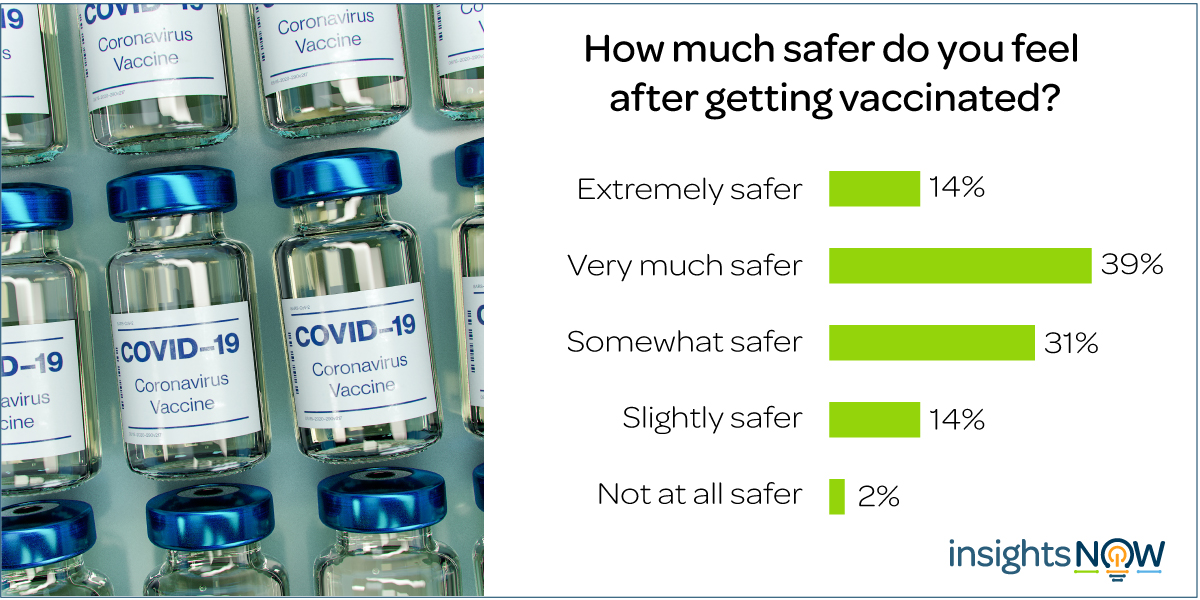Studying human behavior means we are always curious about what is going on in the world and why. As the COVID-19 vaccine rollout continues in the United States, we decided to check in with our research communities to help us gain a deeper understanding of reasons behind people’s decisions to get or not get the vaccine.
Safety First: Driver of Vaccine Behavior
Feeling safe is driving the actions of both those who are getting vaccinated as well as those Americans who are not choosing to be vaccinated at this time. For those choosing to be vaccinated, they are feeling safer visiting family and friends, working at their jobs, and being in public situations after vaccination. According to one study participant post-vaccination, “I felt tremendous relief. I can now make necessary forays into public areas without having a high level of anxiety.”

For those choosing not to be vaccinated, study participants feel the vaccine itself is not safe for them. In fact, 76% of those who are not getting vaccinated cite concerns about the safety of the vaccine as their reason for avoidance. Seventy percent are worried about side effects of the vaccine. You can download our infographic to take a closer look at responses.
Our study also uncovered variance in vaccine acceptance by residence area, with more participants based in urban and suburban areas accepting the vaccine than those located in rural communities. We also looked at how various age groups felt after vaccination. To dig into the data with us, check out our webinar on this topic.
Behavior Change Due to COVID-19 Vaccine
No matter the choice on whether to get vaccinated or not get vaccinated, behaviors are changing due to the COVID-19 vaccine. After vaccination, we are seeing Americans increase social behaviors like 50% of study participants reporting that they will be increasing plane travel and 55% planning on visiting family and friends. Others report that they will be eating indoors at a restaurant (42%), returning to the gym (39%), and/or grocery shopping in-store (22%).




